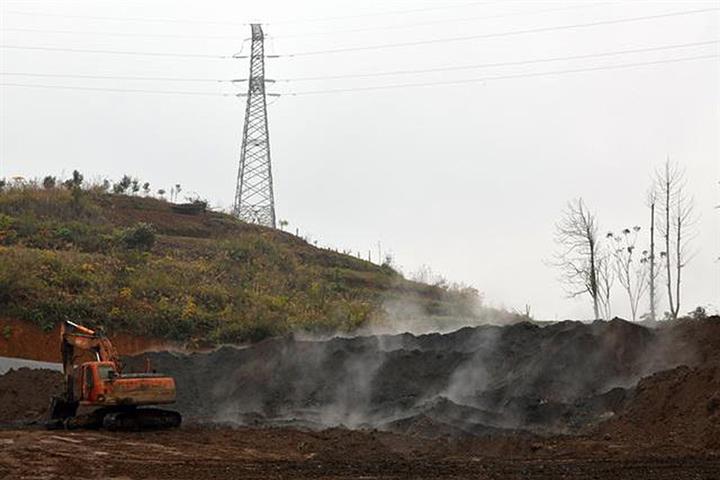 China to Issue New Pollution Control Rules for Manganese Industry
China to Issue New Pollution Control Rules for Manganese Industry (Yicai Global) March 18 -- The Chinese government will bring out strict new rules for the collection, storage and transport of industrial waste to control pollution from the country’s booming manganese industry.
China is home to 97 percent of the world's manganese production capacity, and the large amount of electrolytic manganese produced each year also brings tens of millions of tons of manganese slag.
Yicai Global learned from the Ministry of Ecology and Environment that the forthcoming regulations will require manganese slag to be treated before being landfilled. Environmental surveys and risk assessments will also have to be conducted beforehand.
China already has manganese slag high-temperature treatment lines, and the treated slag is used as a raw material to produce cement. The new rules will specify the pollution control requirements for this process.
The new facilities and treatment processes required will result in higher costs, an inevitable part of the correction from lax pollution controls in the past, but the rise in costs is not expected to be too high, Yicai Global learned.
China is the world's main producer of electrolytic manganese metal, electrolytic manganese dioxide and high purity manganese sulfate. But the manganese mines in China yield a relatively low average ore grade of about 12 percent, and the production of 1 ton of manganese metal creates 8 to 10 tons of manganese slag.
Up to now, the accumulated manganese slag in China has exceeded 100 million tons. It contains a large proportion of soluble salt compounds and has a complex composition, resulting in environmental risks if it is not treated properly.
At present, its treatment mainly relies on landfilling, which requires large tracts of land and is very costly. Environmental pollution caused by leakage from manganese slag pools has also been known to happen from time to time.
Editor: Tom Litting